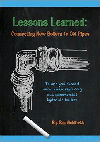Network '07: PVF Issues Tackled Candidly

Network ’07, which included the annual convention of the American Supply Association, took place Oct. 24-27 in Anaheim, CA, and included several PVF discussions of notable candor. Highlighting the list were programs sponsored by ASA’s Industrial Piping Division (IPD) and a roundtable discussion put on by the PVF Roundtable in conjunction with Wholesaler magazine, moderated by PVF industry columnist Morris Beschloss.
The IPD program featured the outspoken Dr. Donald McNeeley, president of Chicago Tube & Iron Co. and a professor at Northwestern University’s School of Engineering. Highlights from McNeeley’s presentation:

Industry panel
The PVF Roundtable panel featured three industry players drawn from the ranks of manufacturers and distributors. Their key insights were as follows.Legend Valve’s Robert Vick issued a clarion call for manufacturers to enhance value in order to reestablish brand identity. “We are approaching a fork in the road for the channel. The value we once provided has either declined or become obsolete,” he noted.
Vick, the first vendor member to ascend to ASA’s Executive Committee, reminded the audience of a message he delivered at an ASA Vendor Member Division breakfast at the 2006 ASA Convention in Chicago. (See our November 2006 Cover Story “Manufacturers and Wholesalers” in our Archives. Free site registration required. www.supplyht.com/CDA/Archives )
A key point in that presentation was that channel power had shifted from the manufacturer to the wholesaler. Vick told the PVF Roundtable audience of an ASA study showing that fill rates from manufacturers trended in the unsatisfactory mid-80% range. Referring to private labels, he said, “Every day I see our customers become our competitors. No wonder they feel they can do it better than ourselves.” He advised manufacturers to shore up fill rates and delivery schedules if they are to become relevant again.
“We have become an industry of order takers ... Unless we give the wholesaler reason to market our brands, they will sell private labels,” he said.
Can brand value be resurrected? Said Vick: “If they can create brand preferences for (bottled) water, we can do it for anything.”
His message to wholesalers also contained some bite. “You can’t promote your private labels over ours and expect the same level of support,” said Vick. “Also, just remember you cannot sue an overseas manufacturer unless he has a U.S. presence,” he warned.
Wholesaler Mike Abeling of L.A.’s Consumers Pipe & Supply said, “When it comes to purchasing, until recently (distributors) couldn’t go wrong. Now stainless prices are coming down, and the market may be turning more precarious.”
Abeling focused his talk largely on the threat from overseas manufacturers. “Third-party logistics companies on the West Coast can get LTL shipments from overseas in less than two weeks. Some (domestic) manufacturers can’t fulfill a full order in two weeks. Some of them can be replaced by these overseas manufacturers,” he said.
His sympathies clearly were with the domestic producers. “Let’s keep our eye on the ball and protect the business from those overseas manufacturers,” Abeling concluded.
Dan Westbrook of Westbrook Manufacturing addressed oil patch prospects from the perspective of his oil country home base in Houston. He noted that the drilling business is booming like never before, which has led to an OCTG shortage increasingly being filled by China, even though “drilling companies have some quality concerns about product from China.” Nonetheless, “if that drops off, the situation will be critical. We’ve got a lot of work to do with sourcing.”
Westbrook noted that the number of rigs in the field were pretty much in line with the numbers from the 1930s-40s-50s. The difference is “better technology enables us to extract more.
“Drilling costs will continue to rise,” he noted, citing greater depths and harsher conditions. “World consumption has and will continue to increase, and there is no more cheap oil to be had.”
According to Westbrook, the outlook for OCTG in 2008 continues to look great “upstream, midstream, downstream and industrial MRO.” He warned, however, that “one of the fundamental aspects of our value equation is we need to do a better job getting product to our customers, or we’ll miss a golden opportunity.”
A note of sadness attended this program with the recent passing of Weldbend founder/owner Jim Coulas Sr. Moderator Beschloss paid tribute to his friend and invited Jim Coulas Jr. to introduce his table full of Coulas family members attending the session.

Industrial Valco
“UberFest” was the theme of the party hosted by master distributor Industrial Valco as it unveiled its new corporate and branch offices at its Rancho Dominguez headquarters in California at an open house on Oct. 24, 2007. Upon arrival, guests were welcomed by German musicians, photographed with hostesses dressed in traditional “Beer-Garten” attire and invited to take a tour through the new offices and warehouse. “We’re very proud of our new facilty and wanted to creatively show it off for the enjoyment of our customers and suppliers,” said company president Rob Raban. “Uberfest” was attended by more than 200 guests from the U.S., Canada and Asia. Founded in 1947, Industrial Valco stocks one of the largest inventories of weld fittings, flanges and valves in North America through its network of branches. The company serves as nationwide master distributor for Bonney Forge, Walworth, Kitz, Crane, Beric Valves, TFA, Boltex, Westbrook and Sureflow Equipment, among others.Looking for a reprint of this article?
From high-res PDFs to custom plaques, order your copy today!






